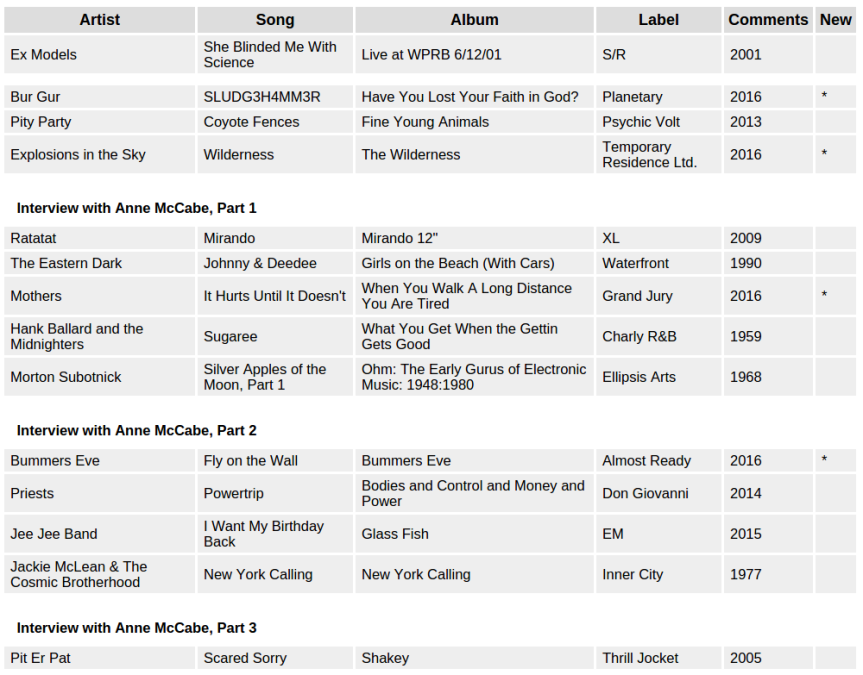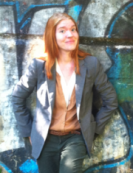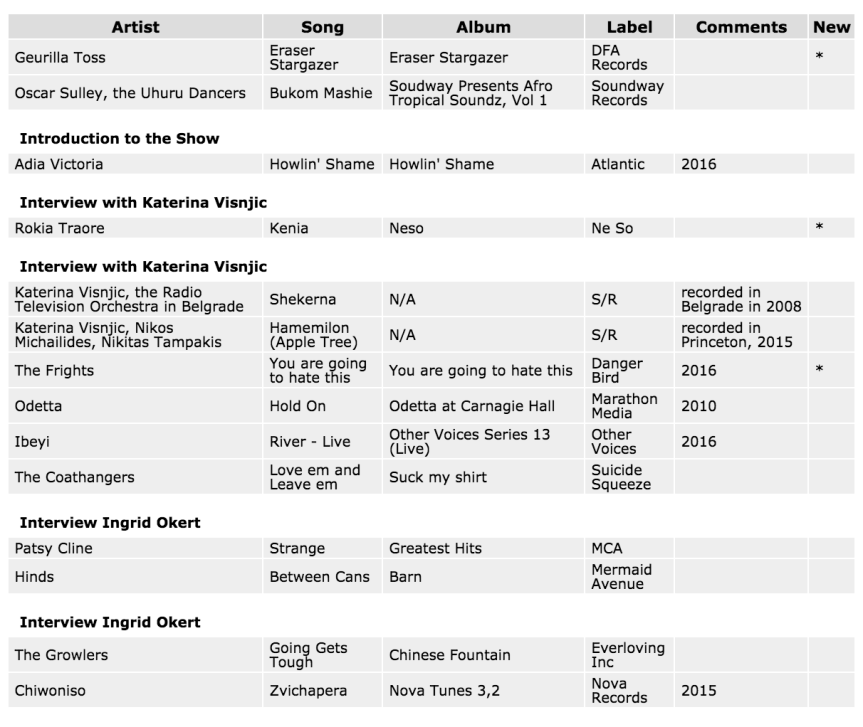Featured video: The Princeton Laptop Orchestra (PLOrk) performs a piece “Skipstep” at a live concert in Spring 2014, featuring guest Sam Hillmer on saxophone.
This week’s show featured Jeff Snyder, Associate Research Scholar of Electronic Music at Princeton University. Jeff’s many roles in the local music scene gave us a lot of topics to discuss: directing the Princeton Laptop Orchestra (PLOrk, see video above!), keeping high-level electronic music composition at Princeton alive, and designing new and flexible instruments for Jeff’s own use and for consumers.
To start, PLOrk is an ensemble started by Dan Trueman, a professor of music, and Perry Cook, a professor of computer science. But instead of playing physical instruments, the group explores the conundrum of interfacing with electronics to make 1) innovative musical compositions that are 2) entertaining to watch live.
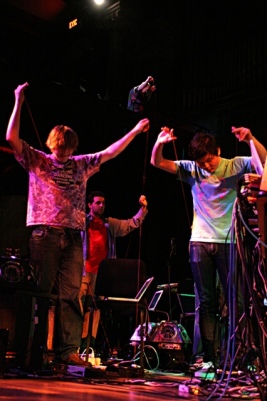
To this effect, the orchestra makes music not only with laptops, but also with video game
controllers and algorithmic motion sensors to stretch the limits of their concert experience. Jeff brought up the example of making music with your eyebrow, which is possible with a little programming and a decent camera. PLOrk also interplays with more traditional instrumentalists, processing their sounds in real time. As the ensemble’s director, Jeff leads a diverse group of students (from math, neuroscience, finance…) through the process of programming software, writing pieces, and ultimately performing their works live.
Jeff’s further role as a faculty member at Princeton is to ensure that electronic music composition remains strong in academia. He points out the challenge of making a computer expressive: the composer has to “design in” the freedom and flexibility that physical instruments have naturally. A violinist can pull subtle emotions through their strings with changes in posture and technique, while a musician on a synthesizer has a relatively limited range of expression. Creating innovative interfaces between musician and instrument is thus a huge part of the writing process.
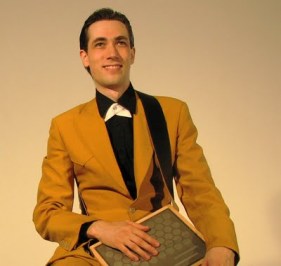
Aside from academic responsibilities, Jeff plays in many musical groups (many of which you can hear on the show recording!). His duo exclusiveOr just features Jeff on an analog synthesizer and Sam Pluta on a computer. The team emphasizes the interplay of raw and processed sounds in their pieces, since Sam can only modify sounds from Jeff’s synthesizer and Jeff can’t modify any of his parts himself. Not one to be limited by genre or style, Jeff also plays in the experimental trio The Miz’ries and the electro-country group Owen Lake and the Tragic Loves. If you aren’t impressed yet, Jeff is co-founder of the Carrier Records music label, which has been releasing experimental work since 2009.
Lastly, the innovative performance of electronic music wouldn’t be possible without new instruments that bring versatility and expression to the world of synthesized tones. That’s why Jeff founded electronic-instrument company Synderphonics, an offshoot of Jeff’s desire to make new instruments for his own use. The company’s first and main product, the Manta, is an open-ended programmable keypad that reacts to sensitive changes in touch. In an age when everyone wants a sandbox to build their own unique soundspace, the Manta is ideal: a musician can tune its keys to respond to touch in an unlimited number of ways. But Jeff’s philosophy is different–the goal is to design an instrument that’s immediately recognizable, like the ghostly tone of the theremin decades ago. Whether or not that will fly in our era of customizability remains to be seen.
After the interview, I commemorate the fifth year since the Tuscaloosa-Birmingham

tornado of 2011 with a short piece about tornado formation. Just like instabilities can occur in plasmas when we try to contain fusion reactions, strange arrangements of fronts in the atmosphere can lead to instabilities in wind patterns during severe weather events. In tornadoes, a cold and dry front high in the sky covers a hot humid layer of air near the ground, and between them a vortex of shifting winds begins to form. When this vortex becomes vertical because of heating, it can form a supercell thunderstorm and becomes a prime environment for tornadoes to form. So stay safe out there: tornado season is well underway for much of the US.
Stevie then closed out our show with news about dengue fever. Now that Stevie has gone through dengue during her time in Indonesia, she runs a huge risk if she gets the disease a second time. It turns out there are four strains (“serotypes”) of dengue, and getting a new strain when you’ve already had one of them is bad news. Your body’s immune system wipes out a lot of the new virus because it’s similar to the old one, but the strains are different enough that some cells sneak below the radar and do a lot of damage. In fact, catching dengue again can be fatal. So it’s a big deal that a new vaccine is doing well in trials, fighting all the serotypes particularly well in humans. Let’s hope it works and becomes widely available, because 400 million people a year suffer through dengue fever.
As always, the playlist can be found below or at WPRB.com.
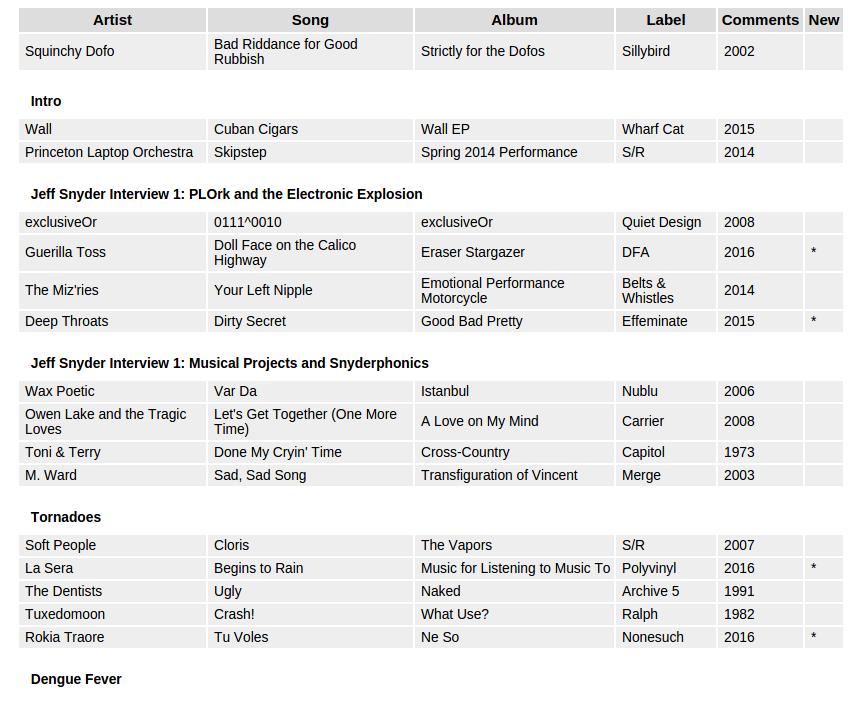

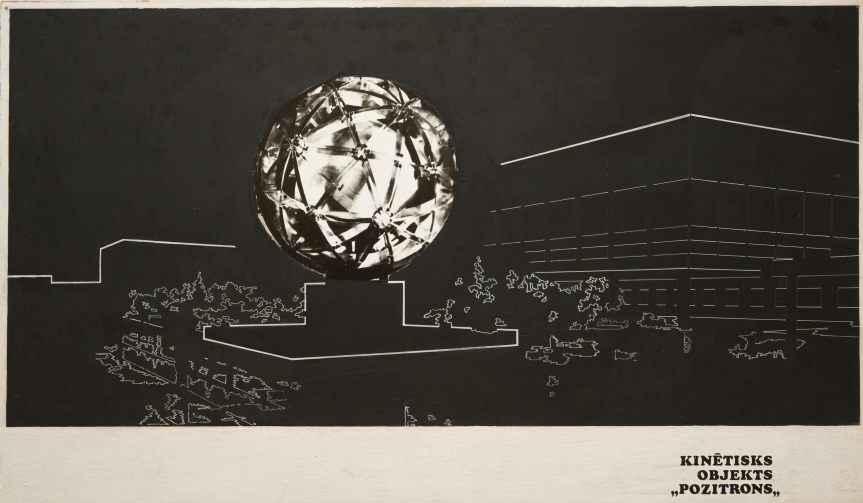
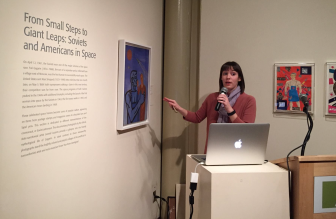
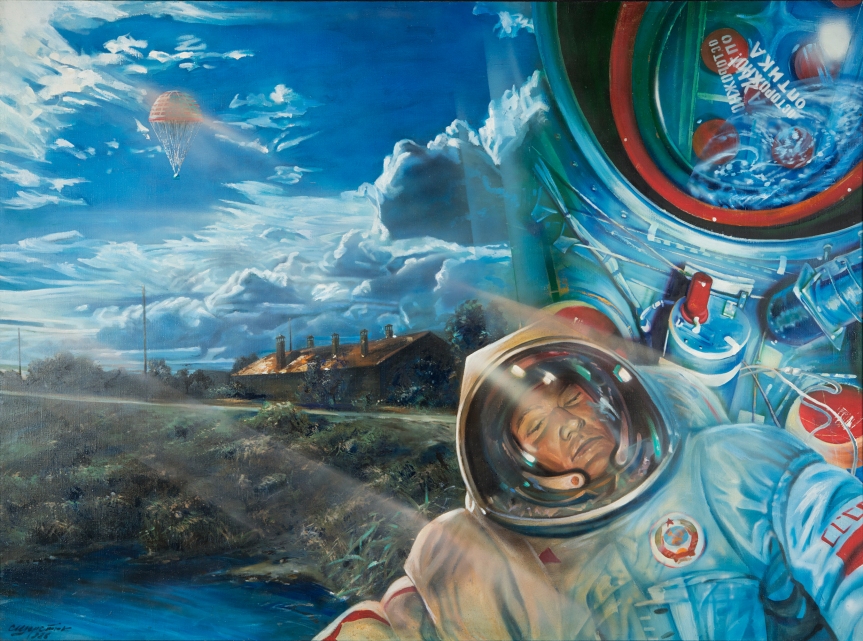
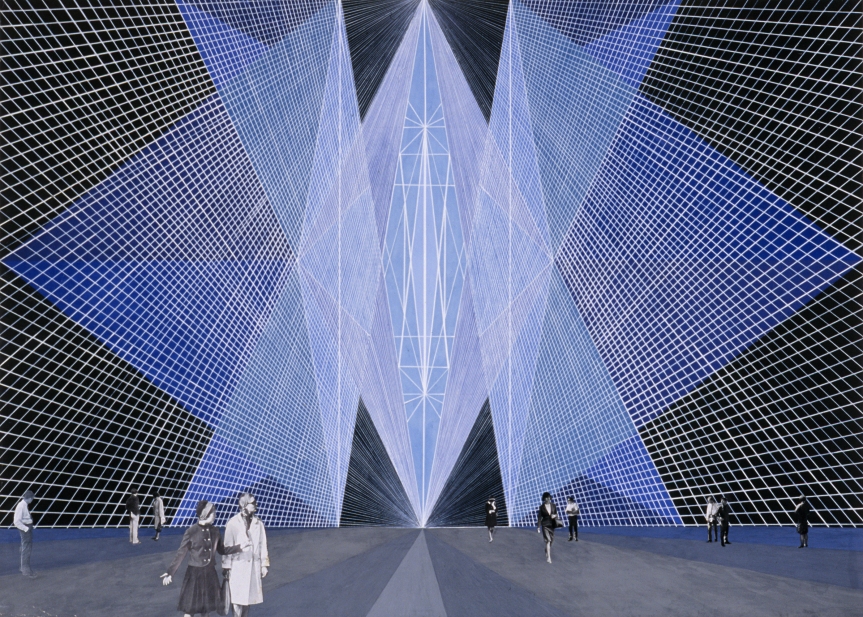
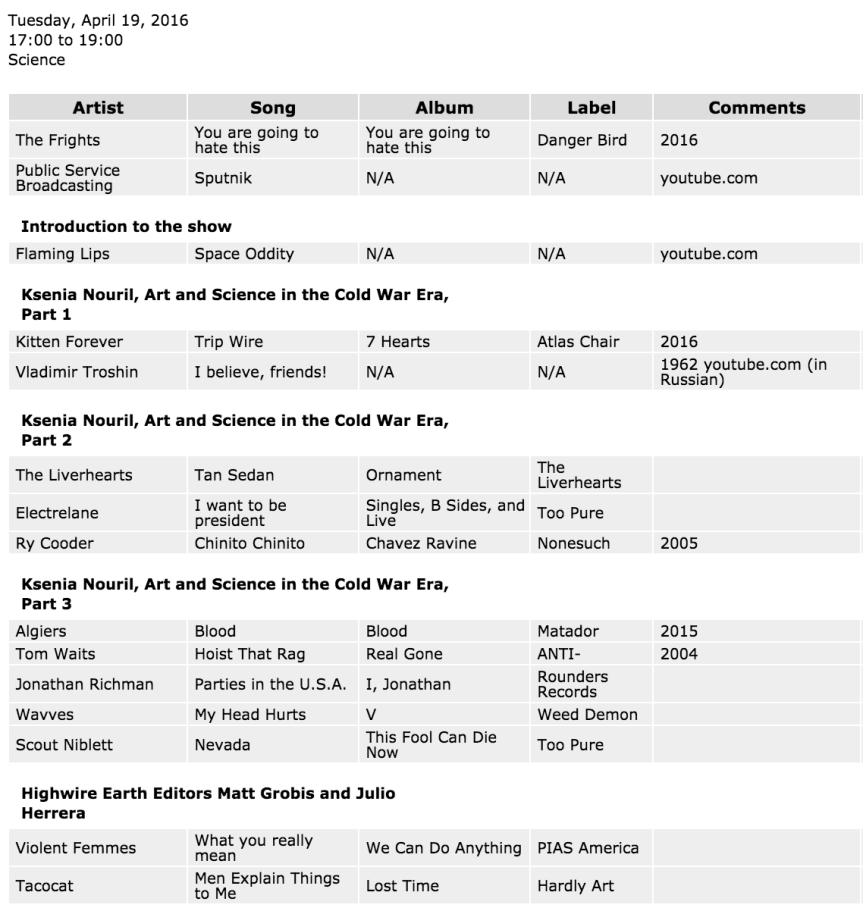
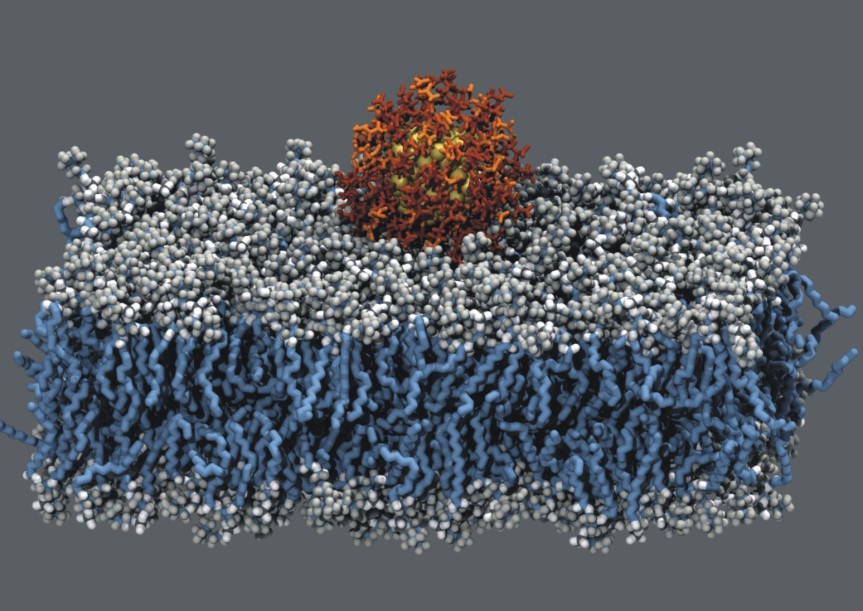
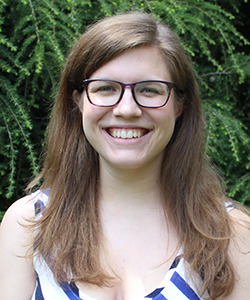
 Finally, Anne is the recent chair of the
Finally, Anne is the recent chair of the 